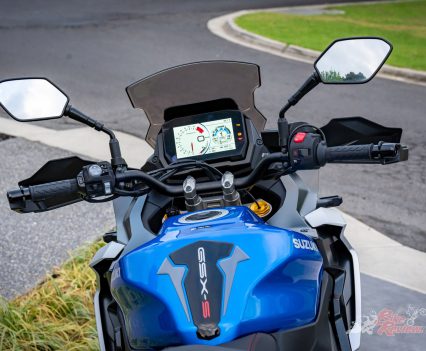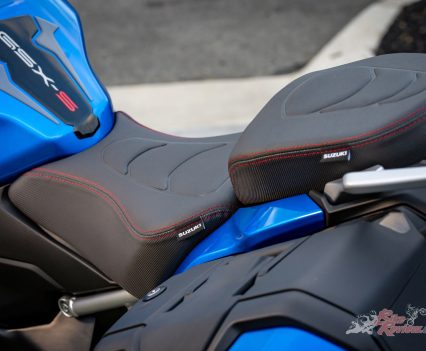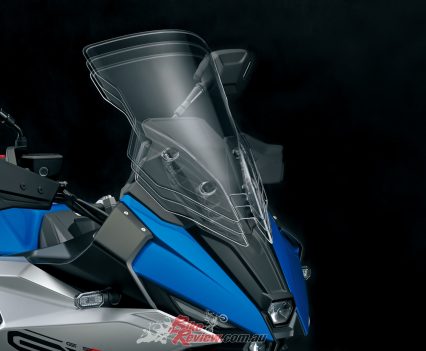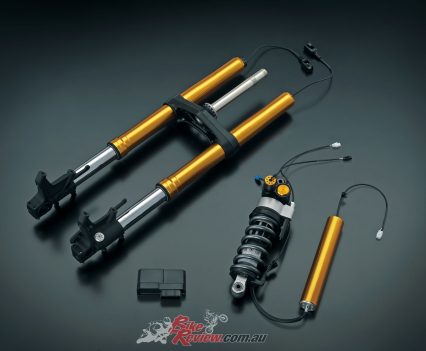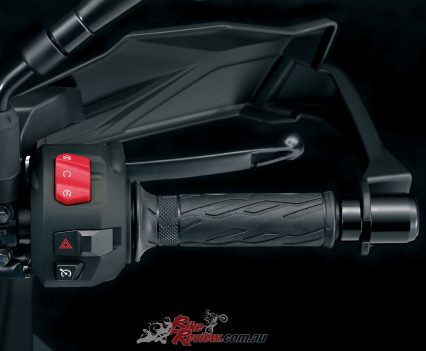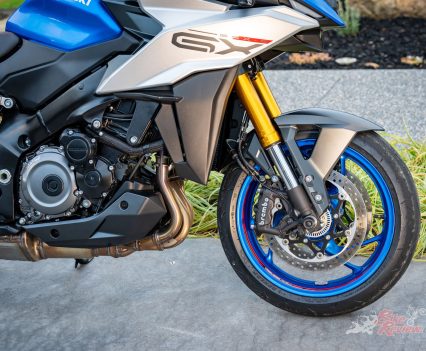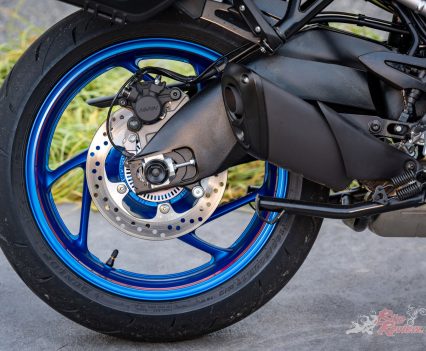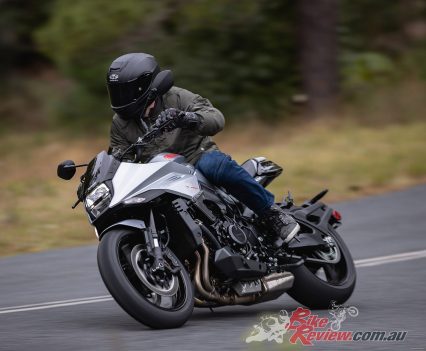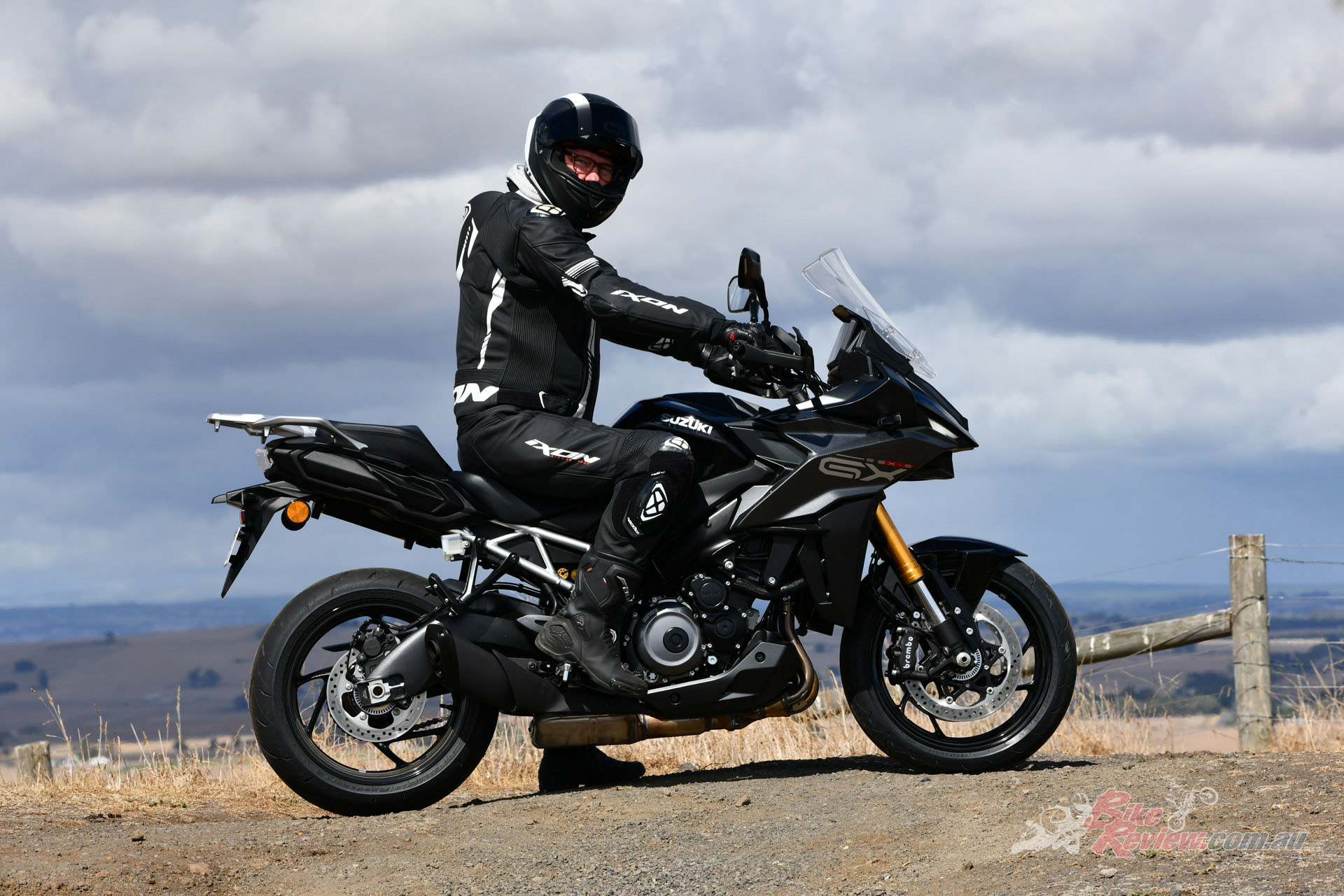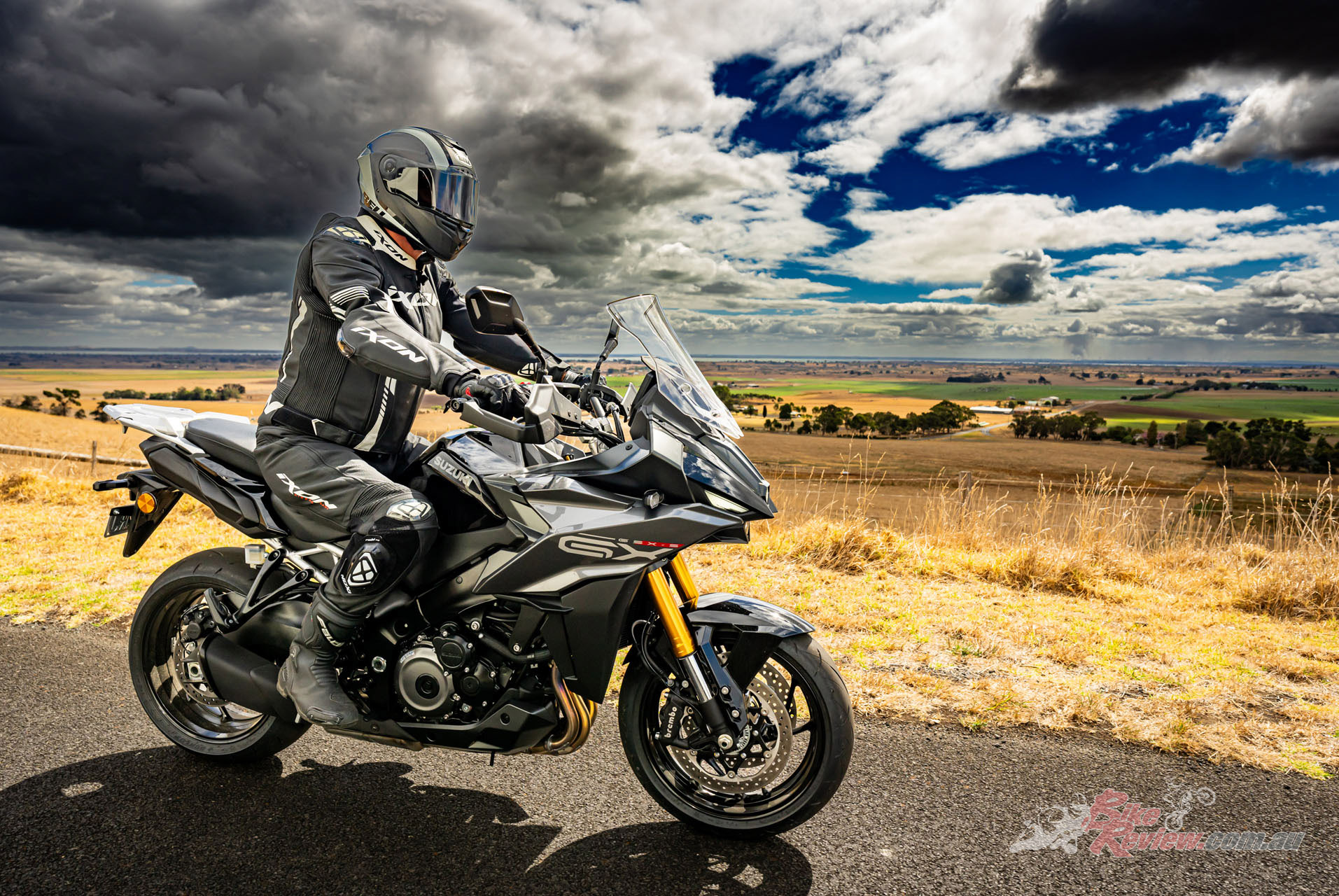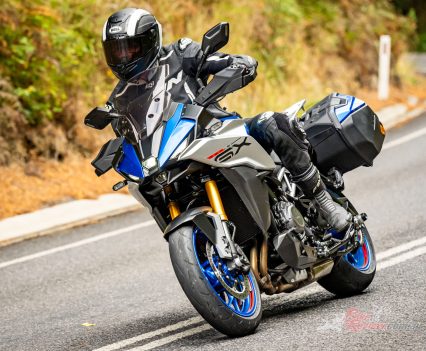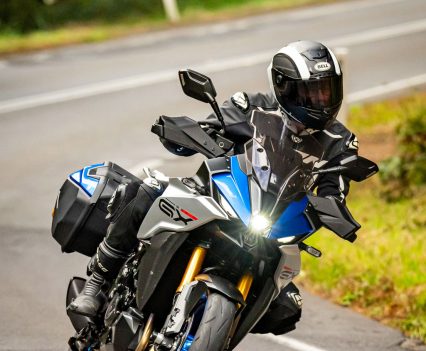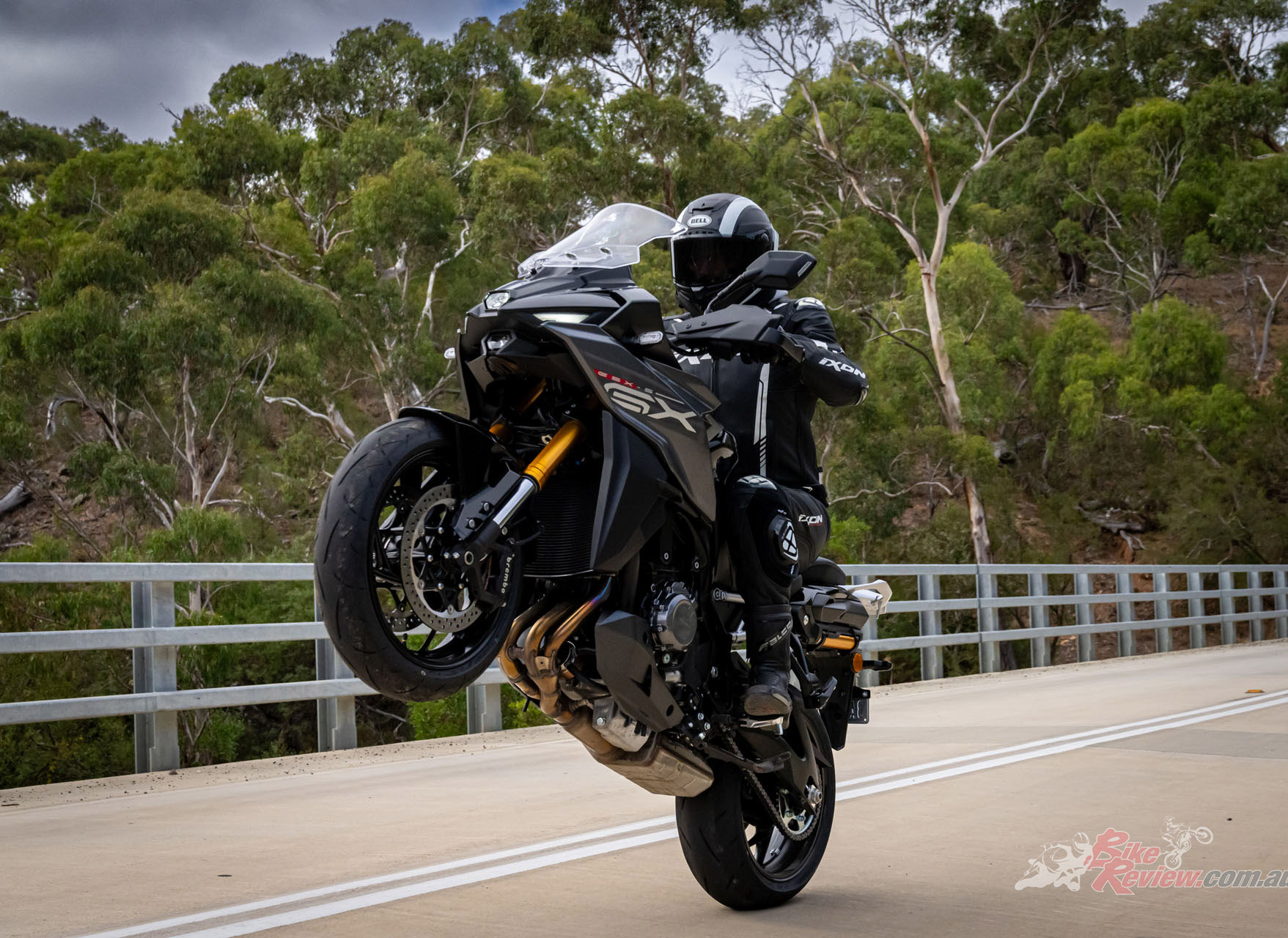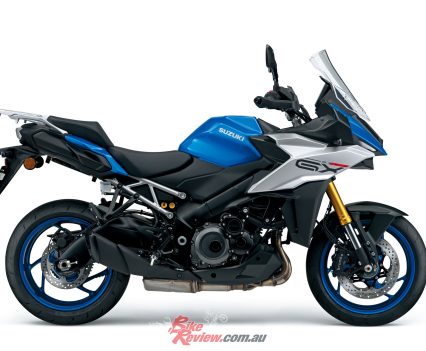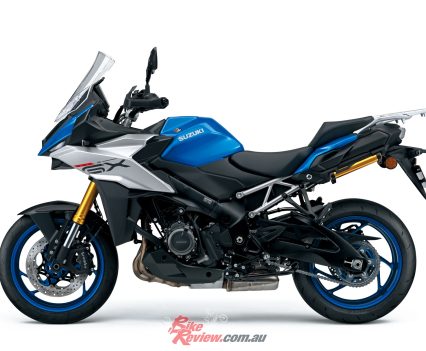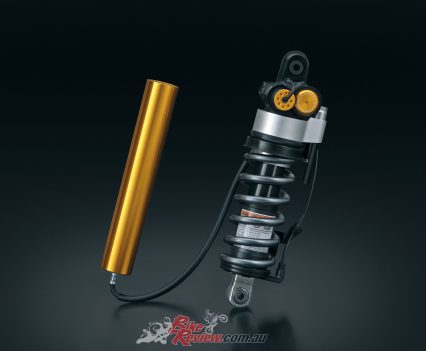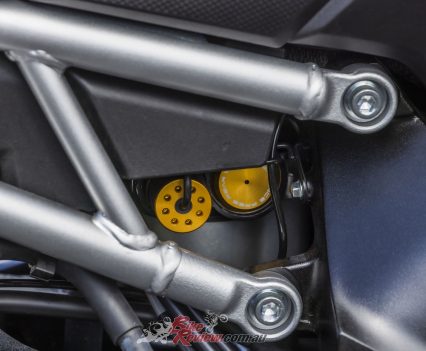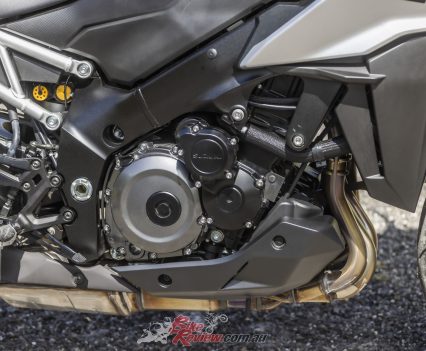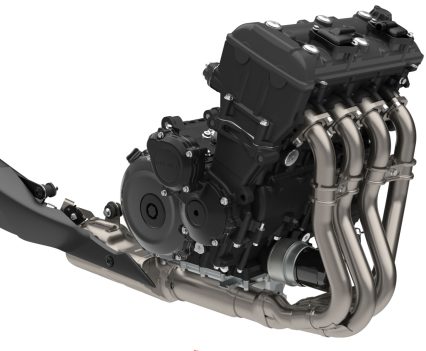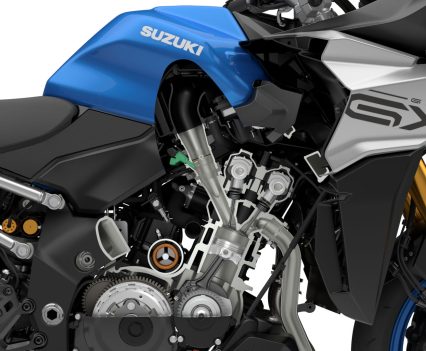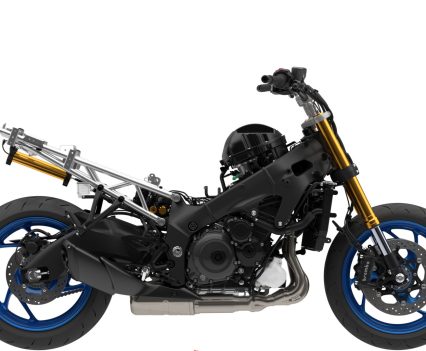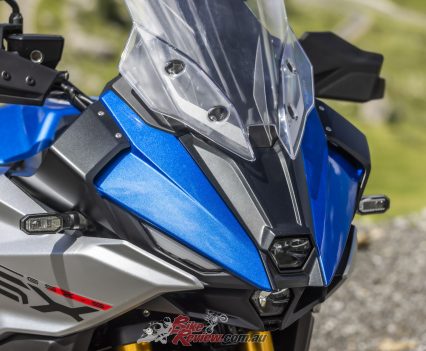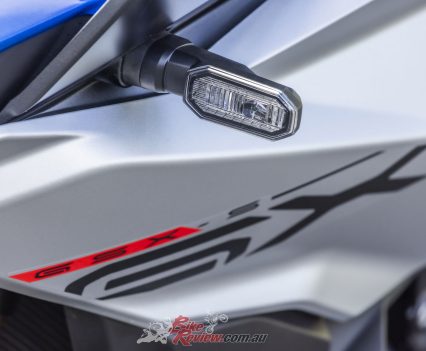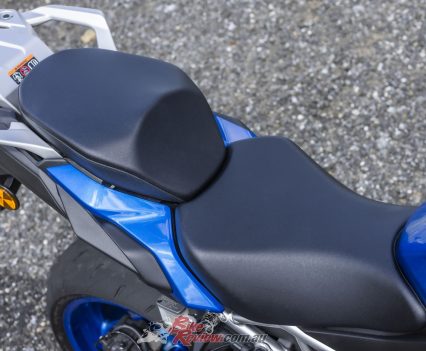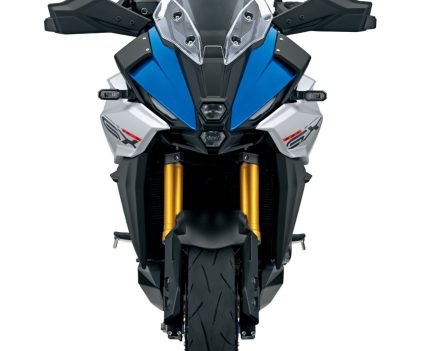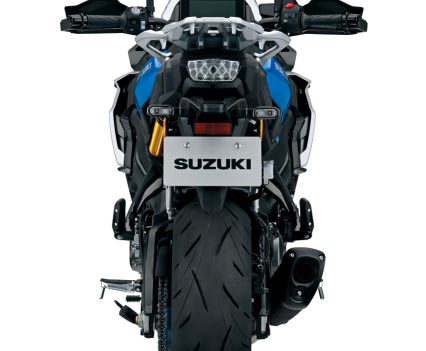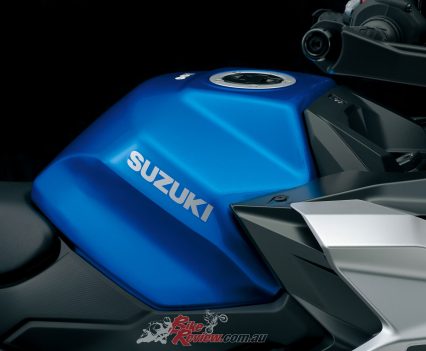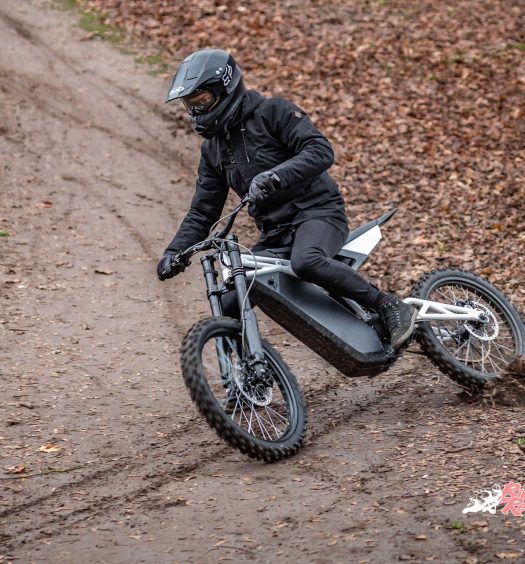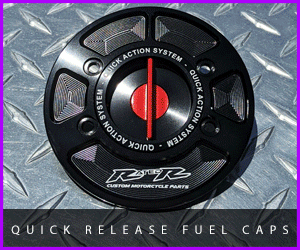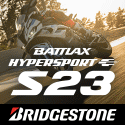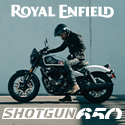Joining the KATANA, GSX-S1000 naked and GSX-S1000GT sports tourer, the new Suzuki GSX-S1000GX is a crossover category bike, between adventure sport and sports touring. We test it out.
I think Suzuki is onto a winner with the GSX-S1000GX, it’s Suzuki’s most technologically advanced motorcycle so far, so I flew down to Melbourne to ride the bike 400km through the mountains and along the Great Ocean Road to find out for sure. Here’s my GSX-S1000GX test.
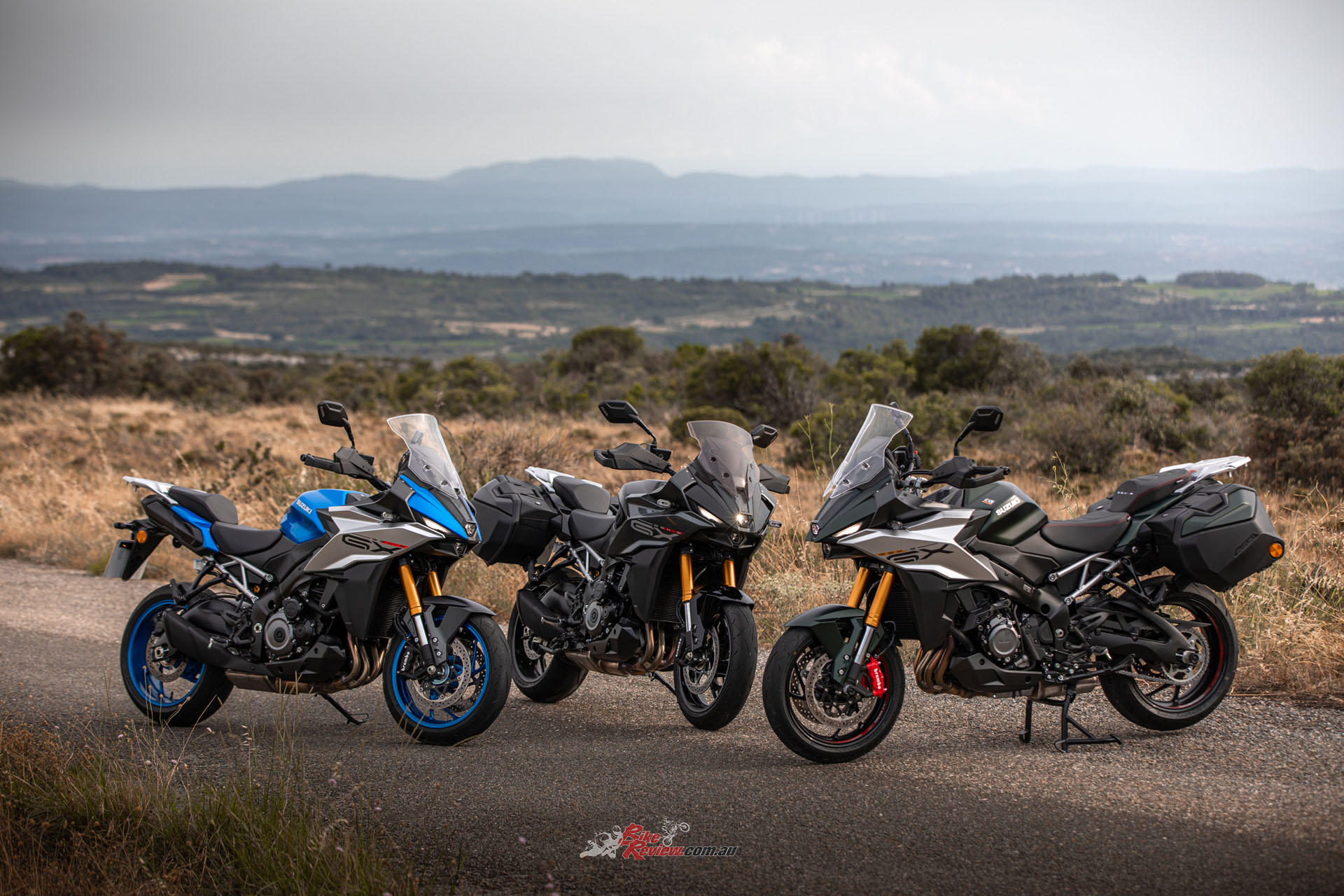
The MY24 Suzuki GSX-S1000GX is available now in Glass Sparkle Black or Metallic Triton Blue with a manufacturer’s recommended price of $25,890 Ride Away.
Bikes are just getting better and better and we as customers are spoilt for choice when it comes to choosing a bike in this class, but at this price point of just $25,890 ride away and the amount of kit you get as standard, the GSX-S1000GX looks like a very appealing option.

“The blue and silver (Metallic Triton Blue) bike looked the best to me, but you also have the option of the Glass Sparkle Black, which looks a bit more stealthy”.
LOOKS AND QUALITY
Suzuki calls the GX model a Crossover, which sits in between a sport tourer and adventure tourer so you basically get a super comfy bike with more sporty aggressive looks and edges towards superbike performance. The build quality looks to be excellent as does the paint finishes on all the plastic body panels and frame sections. The blue and silver (Metallic Triton Blue) bike looked the best to me, but you also have the option of the Glass Sparkle Black, which looks a bit more stealthy. Adding to the bikes sleek looks are the new stacked LED headlights and slim triangular shaped riding lights, they really sharpen up the bikes front-end appearance.
WHAT YOU GET
Well you get pretty much everything you could need in the way of equipment and electronic aids, the only thing missing really are heated handlebar grips, but you can get them as an option. Everything is adjusted through the large 6.5in crystal clear TFT dash, which is easy to read and operate and pretty uncluttered by modern day standards. You can set the dash manually from black to white or it will automatically change depending on the ambient light.
The only thing missing really are heated handlebar grips, but you can get them as an option.
There are a whole load of functions like being able to download the Suzuki mySPIN app and display the maps on the screen, along with radio, cruise control setting, smartphone connection, rider to passenger intercommunication, SDMS-α mode SRAS (when active) – Suzuki traction control mode – lift limiter (when active) – active damping control mode – automatic rear suspension mode. Then you have the usual stuff like fuel consumption, trip meters, clock and much more (see breakout).

“Everything is adjusted through the large 6.5in crystal clear TFT dash, which is easy to read and operate”.
Shielding the dash is a manually adjustable windshield that is moved by unscrewing the bolts and lifting it up or down, this offers decent protection from the elements and doesn’t give too much wind buffeting. You also get large hand guards, which were nice on the cold morning, deflecting the wind.
This is Suzuki’s first bike with electronic semi active suspension and I must say it’s definitely the way of the future, to have the ability to change suspension on the move when you encounter different riding conditions can not be undervalued. The suspension itself is by SHOWA and has a whole load of adjustability, the suspension options are linked to the ride modes and are operated via the Suzuki Road Adaptive Stabilisation (SRAS). Sounds complicated, but in reality it’s pretty simple to operate and the excellent easy to use switchgear helps too.
Using the three standard ride modes you can toggle between A (Active), which is more aggressive, B (Basic) which is a medium setting and C (Comfort) which gives you softer suspension and softer throttle response. The best part about each mode is they can be adjusted separate to the factory presets. For example if you want full throttle response choose A mode, but you prefer a safer level of traction control switch that up to six, if you want the suspension softer reduce that down to S (soft), you can then select softer or stiffer damping modes too or just leave it in auto.
Everything is easy to navigate around and the menus are basically idiot proof. For me, one of the big pluses of Suzuki’s system is it remembers what you’ve changed, so no matter how long the bike is left it won’t revert back to factory setting unless you adjust it, plus you can also turn TC off completely, which in itself deactivates to wheelie control should you be inclined to lift the front.
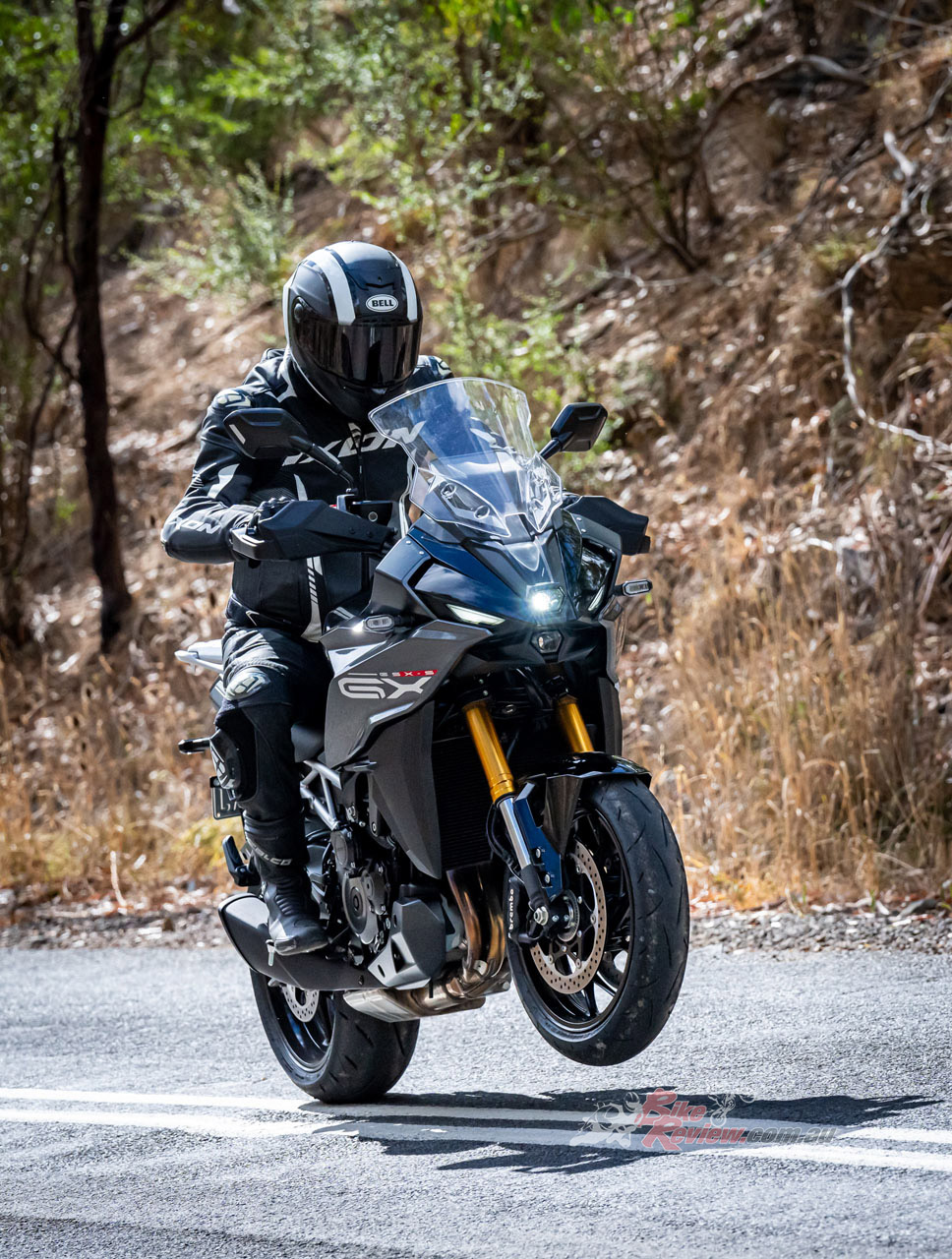
“You can also turn TC off completely, which in itself deactivates to wheelie control should you be inclined to lift the front.”
Suzuki have not only jumped all in with the electronic suspension, you also get cornering ABS, cornering traction control and a smart cruise control system that allows you to set it between 30km/h to 180km/h and if you’re in second gear or higher, you can shift up and down at will with the bi-directional quick-shifter and it will not deactivate the cruise control, unless you pull the clutch or press the brake.
Suzuki have not only jumped all in with the electronic suspension, you also get cornering ABS, cornering traction control and a smart cruise control system…
If you ask anyone who’s ridden a lot of bikes over the years what the best engines are the Suzuki K5 from the GSX-R1000 unit inevitably pops up and rightly so, they have made over 180,000 engines and are now using a re-tuned (for better midrange) version in their GSX-S1000, GSX-S1000 KATANA, GSX-S1000GT and now this bike. Suzuki claims 112kw (150hp) at 11,000rpm from their 999cc four-stroke liquid-cooled DOHC inline-four and 106Nm at 9,250rpm, certainly enough to have a bit of fun.
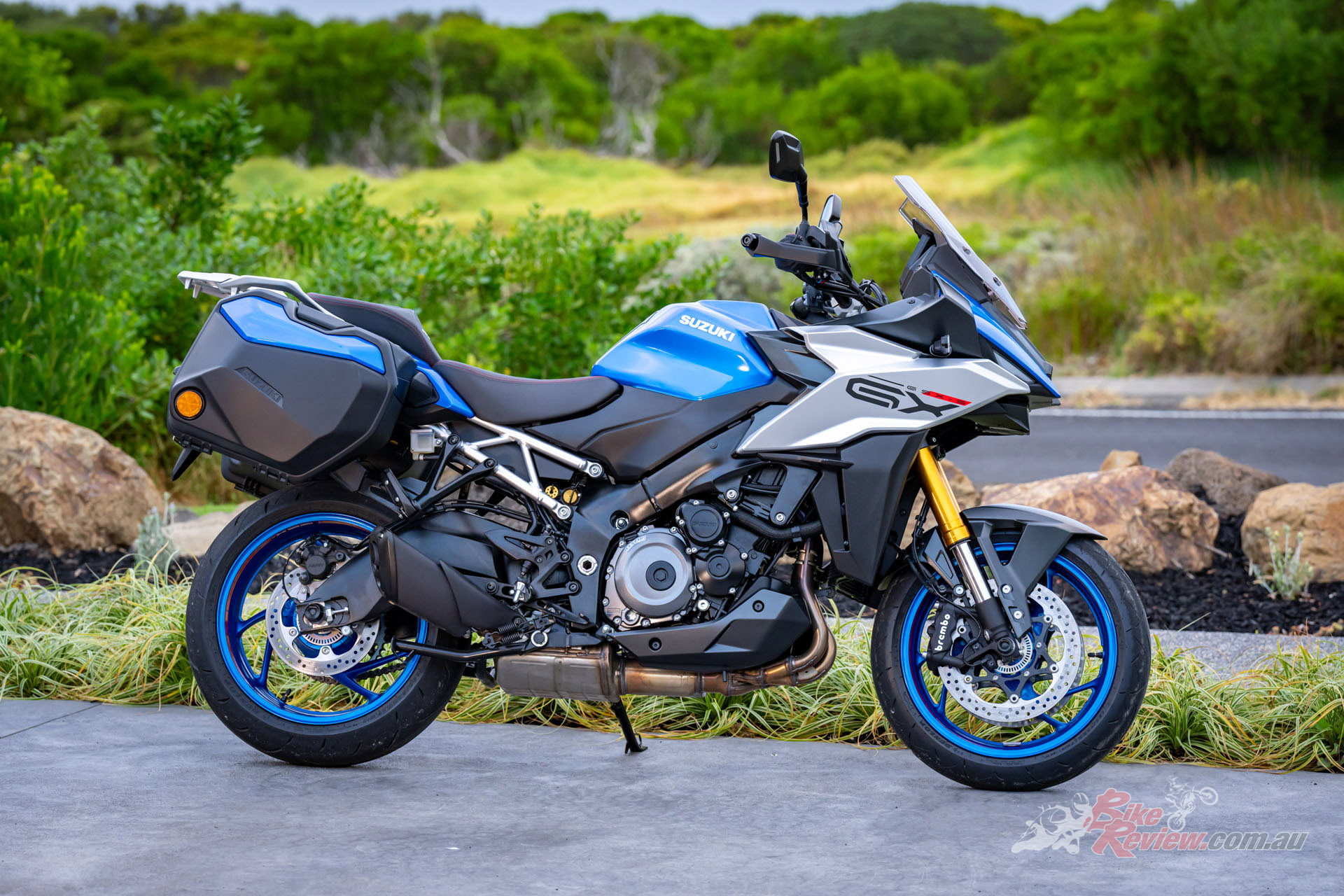
The frame is a twin-spar aluminum frame with a aluminium swingarm that’s been lifted straight from the GSX-R1000.
The frame is a twin-spar aluminum frame with a aluminium swingarm that’s been lifted straight from the GSX-R1000, which no doubt helps not only with its sporty appearance, but overall performance, this gives an overall wheelbase of1470mm. The wheels are 17in lightweight, six-spoke cast aluminum units and shod with Dunlop SPORTMAX Roadsport 2 tyres, which turned out to offer pretty decent grip levels in the wet and dry.

Glass Sparkle Black or Metallic Triton Blue? Pommie chose the black to match his leathers, but he’d buy the blue…
RIDING
After a presentation and a demonstration on how all the functions of the bike work the night before, I have a choice of two bike colours to choose from. I go for the black option, mainly because I think it would look cool in the photos with my black leathers, but the bike also comes in a Metallic Blue option too, which I would personally go for, as it looks great. Swinging a leg over the bike, it feels reasonably tall as you’d expect, but I’m six-foot and have no problem planting my feet flat on the ground. The seat is actually 845mm so it’s not as extreme as an adventure bike, but not low either.
The seat is actually really comfy and there is also an option for an even comfier one. The seat to ‘bars to ‘pegs rider triangle has been designed for munching those kilometres, because the ride position is just far enough forward so my back is not vertical, but not enough so I have weight on my wrists. I press the start button and the big 1000 springs to life and it sounds just like I remembered when I rode my mates original K5 back in the day, grunty and eager to go.
I pull in the clutch select first and we start our journey out of Melbourne, the clutch is pretty light, but with the bi-directional quick-shifter there’s hardly any need to use it. Speaking of the quick-shifter, it’s up there with the best, both up and down the gearbox is sleek, fast and precise and a joy to use. There’s no getting over the fact that this is a big bike, with a kerb weight of 232kg, but it’s on par with the competition, just something that you need to keep in mind if you’re not used to riding big machines.
The bikes have been set to their factory setting so I choose to start in C mode, which provides the most comfort, soft on the active damping, auto on the preload, 6 on the traction/wheelie/roll torque and the smoothest throttle response. I figured I’d work through the modes and see if they are much different, which they certainly are…

“I then set the preload from auto to rider with luggage and this made the bike turn much better, without sacrificing too much comfort”.
At first in C mode I wasn’t too impressed, yes the suspension was super comfy and soaked up just about every bump I threw at it, but the steering felt a bit slow, this turned out to be an easy fix by a quick press of a button. I then set the bike to B mode, this sharpens up the throttle response, sets the active damping to medium, traction/wheelie/roll torque to level 4, however, I then set the preload from auto to rider with luggage and this made the bike turn much better, without sacrificing too much comfort.
“On the freeway the GX just eats up the K’s and the cruise control works really well, it doesn’t have adaptive cruise control, but the standard system works flawlessly”…
On the freeway the GX just eats up the K’s and the cruise control works really well, it doesn’t have adaptive cruise control, but the standard system works flawlessly. One drawback I did find were the mirrors suffered from a bit of blur at freeway speeds. I found if I was doing 100km/h they were fine, but increase to 105km/h then the bike was starting to get into the meaty part of the revs at around 4500rpm and you got slightly more vibration, not annoying, just enough to let me know I was sitting on something with performance potential.
Once we get to some decent twisty roads I select A mode, this gives ultimate throttle response, and hardens all the suspension up and puts the traction/wheelie/roll torque into level 2. After a bit of a play I set the suspension back to medium with rider and luggage option for damping. The good thing about this system is it remembers what you’ve done, so you basically have 4 customisable modes if you include the user mode.
For example, I can just leave A mode as my wheelie setting where I have full throttle response and traction control off, then at the press of a button I’m good to go. But on this twisty road, I’m really starting to appreciate what this GX is all about, the ability to ride hundreds of kilometres in comfort, press a button and I’m scratching up a mountain pass, it’s brilliant.
The handling when set up correctly is pretty impressive for a big bike and seems to get better the faster you go, yes I can feel the weight when changing direction on these incredibly tight mountain roads, but it just makes it all the more rewarding to get it right.

“The ability to ride hundreds of kilometres in comfort, press a button and I’m scratching up a mountain pass, it’s brilliant.”
The bike is super planted and we’d previously been going through some fast open sweepers and the bike just encouraged me to twist the throttle even more in the middle of the corner, it feels that stable and surefooted. But for me, the fun is the tight corners and in this regard the K5 engine comes to life, yes Suzuki have returned it for better low down torque, but they can’t hide its true heritage of a screaming sportbike engine and when you ask for it, the engine really delivers exciting performance and sounds fantastic when on full song.
“The engine really delivers exciting performance and sounds fantastic when on full song.”
Accelerating off one corner to the next the GX really moves and the sensation is only enhanced by the incredible quick-shifter, even smashing down multiple gears at a time for a slow corner the GX does not complain and the slipper clutch keeps everything inline. The Brembo brakes also do a good job of pulling up the GX, although not class leading they are powerful enough, especially for road use and I had no real complaints.
After a 400 km day in the saddle, which to be honest is about 250 K’s more than I’m used to these days, I was still feeling pretty good, even for a 57-year-old bloke that’s had back surgery, so this is a true testament as to how good the GX is at long distance riding. So, the question is would I own one? Well, if I was after a bike I could do long distances on that is really capable of behaving like a sportsbike on a twisty mountain road and is great value like the Suzuki GSX-S1000GX, then yes…
GSX-S1000GX TECH TALK
The all-new Suzuki GSX-S1000GX was launched at the 2023 EICMA motorcycle show, alongside the all-new GSX-8R Supertwin. The GSX-S1000GX shares the same engine and frame platform as the GSX-S1000GT. Check out the details and Australian pricing…

The all-new Suzuki GSX-S1000GX was launched at the 2023 EICMA motorcycle show, alongside the all-new GSX-8R Supertwin. The GSX-S1000GX shares the same engine and frame platform as the GSX-S1000GT.
Check out our GSX-S1000GT review here…
Though both the GX and GT belong to the GSX-S series, the differences are also significant. The GX features a longer suspension stroke that contributes to its extended front and rear wheel travel, increased ground clearance and comfortable upright riding position. Furthermore, it achieves a whole new level of suspension performance by introducing Suzuki Advanced Electronic Suspension (SAES) — Suzuki’s first electronic suspension — and by adopting Suzuki’s original new Suzuki Road Adaptive Stabilisation (SRAS) system.
Electronics
The Suzuki Intelligent Ride System (S.I.R.S.) introduces a collection of advanced electronic systems that lets the rider easily optimise the performance characteristics to best suit their riding style and level of riding experience.
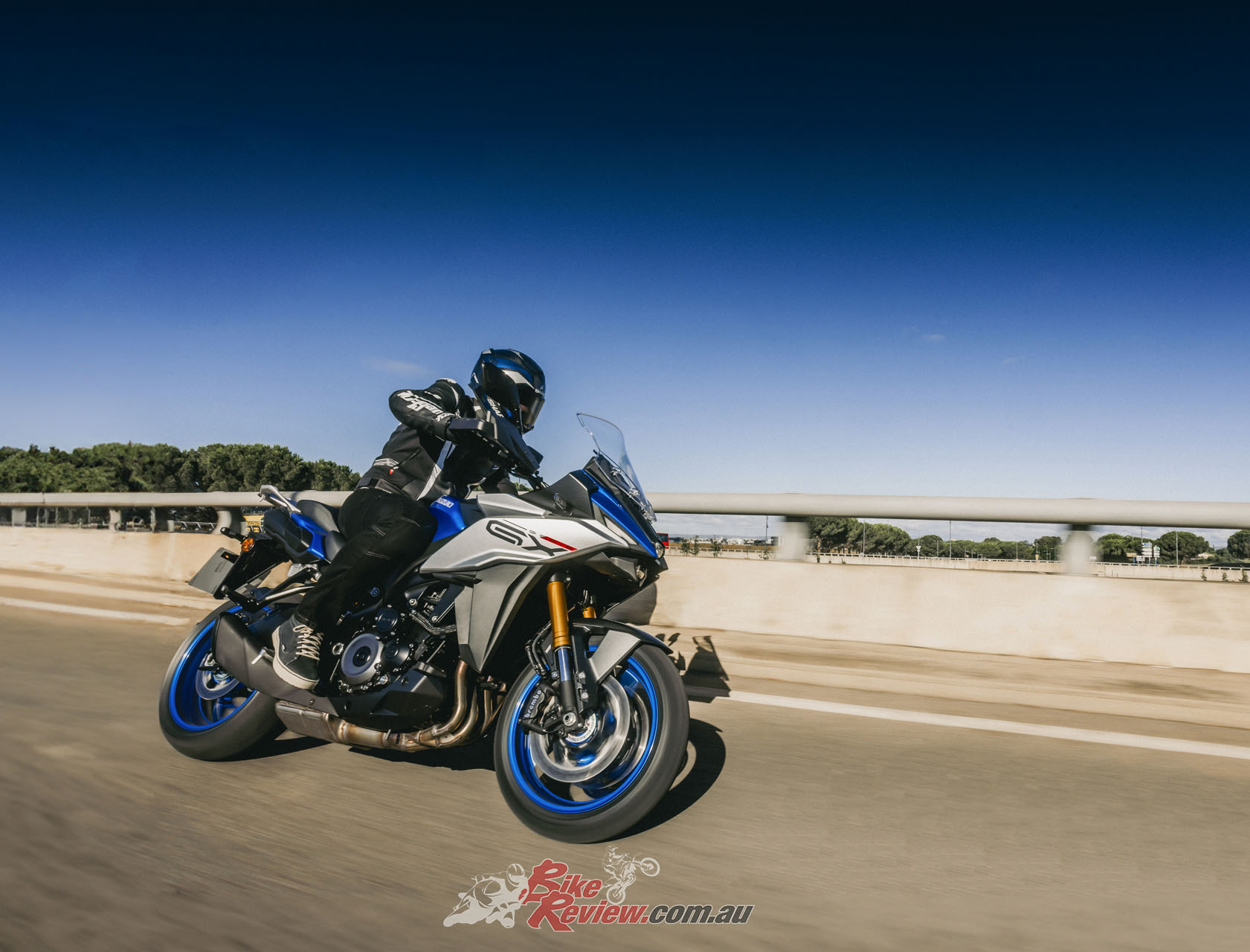
The GSX-S1000GX is the first Suzuki motorcycle to adopt Suzuki Advanced Electronic Suspension (SAES).
The GSX-S1000GX is the first Suzuki motorcycle to adopt Suzuki Advanced Electronic Suspension (SAES), which offers a boar range of settings that ably support everything from aggressive sport riding to long-distance touring. The suspension features a long 150mm front fork stroke and 150mm of rear wheel travel that provides greater comfort, even when touring for long distances.
Suzuki Road Adaptive Stabilisation (SRAS) detects a change in rough road, it automatically triggers stronger Suzuki Floating Ride Control (SFRC) to help smooth out the ride and adjusts the Electronic Throttle Valve settings to deliver softer, more controllable throttle response. When the GX returns to a smooth surface, SRAS is disabled and SFRC returns to a normal setting.
Selectable Automatic Rear Suspension Modes – Electronic control over the rear suspension’s spring preload settings lets you quickly and easily select among four available modes designed to suit your preferences or the immediate needs of the situation. AUTO mode is a user-friendly mode that allows anyone to easily enjoy the recommended automatic settings.
Modes:
- A (Active) mode is designed for the more aggressive riding style of a sporty run on good roads
- B (Basic) mode is set up to deliver a balance of settings good for a broad range of riding situations
- C (Comfort) mode aims to prioritize comfort and controllability, particularly when riding long distances or carrying a passenger and gear
Equipped with a Suzuki Traction Control System (STCS) with a wider selection of 5 mode settings (+ OFF). The finer incremental control over settings allows the new 5-mode traction control system to better fit a more diverse variety of riding conditions and styles. A ride-by-wire throttle system provides finer control also allows optimum settings to best match each of the SDMS modes.
Cruise control is a convenient new system. Speed setting can easily be adjusted up or down using the (+/-) select switch on the left handlebar and confirm the current setting on the TFT LCD instrument screen by pressing the left handlebar switch’s RES button. Cruise Control can be set at speeds between 30km/h to 180km/h while riding above 2,000rpm in second gear or higher.
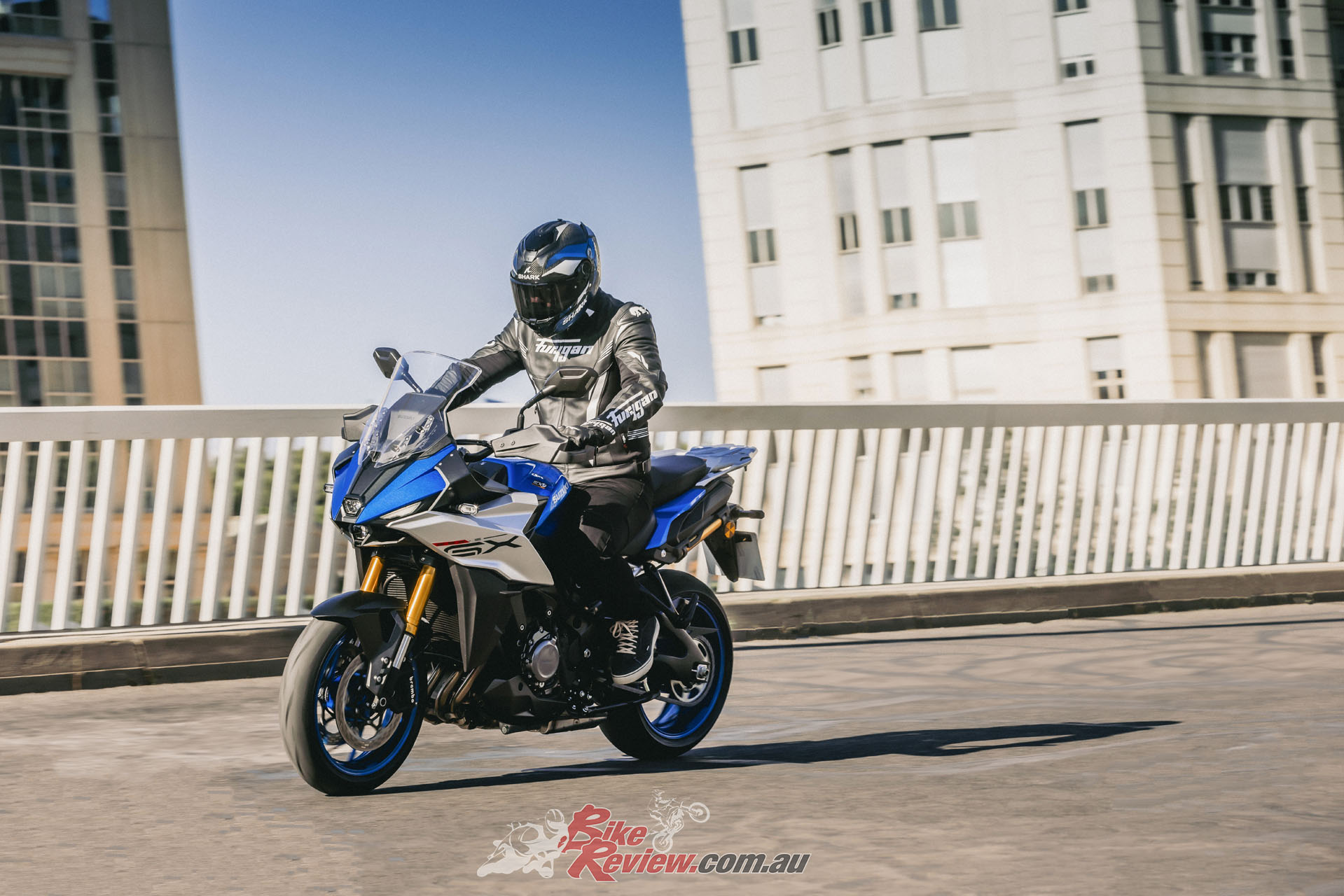
Other niceties include Suzuki’s Low RPM Assist system which monitors and automatically raises the idle speed when taking off from a stop or when riding slowly through traffic to reduce surging and chances of engine stalls.
The bi-directional quick shift system allows the rider to shift up or down more quickly and easily without the need to operate the clutch or throttle. Suzuki’s Easy Start System lets the rider effortlessly start the motorcycle with one quick press of the starter button.
Other niceties include Suzuki’s Low RPM Assist system which monitors and automatically raises the idle speed when taking off from a stop or when riding slowly through traffic to reduce surging and chances of engine stalls.
The GX features a full-colour TFT LCD screen. The new 6.5in screen has been developed as a large multi-information display for specific use on motorcycles, whereby the TFT LCD panel features an anti-reflective coating for improved visibility in bright light and a scratch resistance surface. Smartphone connectivity that allows access to a variety of apps and functions that bring greater convenience, functionality, and fun to the ride. Smartphones can be connected via USB, Wireless LAN or Bluetooth, and charged using the dedicated USB outlet on the left side of the TFT LCD panel.
The GX is powered by a the same 999cc liquid-cooled DOHC inline-four engine seen on the GSX-1000. You can read the full rundown on the engine here…
Chassis
At the core is the compact, lightweight chassis design with a rigid twin-spar aluminium frame and ruggedly braced aluminium-alloy swingarm. Lightweight, six-spoke cast aluminium wheels are shod with the latest generation of Dunlop SPORTMAX Roadsport 2 radial tyres.
Suzuki say that “The GX is designed to isolate you and the passenger from vibration that might otherwise by transmitted from the engine or chassis. Details include the use of floating handlebars, floating mirror mounts and rubber footrests that reduce vibration wherever you or your passenger come into contact with the bike. “
Styling
The all-new GSX-S1000GX features a sharp front cowl, protruding nose that culminates at the compact LED low- beam headlight. The headlight is flanked by LED position lights with the look of a sharp pair of “eyes”. And, of course, it’s wrapped in that Metallic Blue colour.
Aerodynamics and wind protection are critically important to achieving the dynamic performance and level of comfort desired when touring for long distances on a large-displacement crossover machine. Suzuki say the front cowl, windscreen and knuckle covers were all designed through a process that involved both wind tunnel testing and feedback from test riders. The windscreen’s 3-step adjustment allows it 50mm of travel, which raises or lowers the height by up to 43mm.
“The goal was to maximise wind protection and make the rider more comfortable by reducing sources of stress such as exposure to the cold and elements. This reduces fatigue when touring for long distances at speed and frees the rider to concentrate on enjoying each outing.”
The fuel tank boasts a capacity of 19L and a design that makes it appear compact. Its large capacity combines with the engine’s excellent fuel efficiency to bring the rider great peace of mind by blessing the GSX-S1000GX with superior touring range per tank of fuel.
The MY24 Suzuki GSX-S1000GX is available now in Glass Sparkle Black or Metallic Triton Blue with a manufacturer’s recommended price of $25,890 Ride Away.

The GX is estimated to arrive in April 2024 and will be available Metallic Triton Blue with an RRP of $25,890 Ride Away.
Customers can reserve their GSX-S1000GX by selecting options from the wide range of Suzuki Genuine accessories available for this model via the Build Your Bike online tool on the Suzuki Motorcycles Australia website. As a gesture of Suzuki’s appreciation for customer commitment, online pre-order customers will receive a bonus “SIDE CASE SET” valued at over $1800.
2024 Suzuki GSX-S1000GX Specifications
Price: From $25,890 Ride Away.
Colours: Metallic Triton Blue and Glass Sparkle Black
Claimed power: 112kW@11,000rpm
Claimed torque: 106Nm@9,250rpm
Wet weight: 232kg
Fuel capacity: 19L
Engine: Euro 5, four-stroke, four-cylinder, liquid-cooled, DOHC, 999cc
Bore x Stroke: 73.4 x 59mm Compression Ratio: 12.2:1
Gearbox: Six speed with bi-directional quick-shifter, Clutch: Wet multiplate
Chassis: Twin-spar aluminium
Rake: 25 degrees, Trail: 97mm
Suspension: Suzuki Advanced Electronic Suspension (SAES), SHOWA SFF-CA USD forks, SHOWA link-type rear suspension, 150mm travel each end.
Brakes: four-piston Brembo mono-block front brake calipers 310mm floating-mount dual rotors, single rear rotor Wheels & Tyres: 17in cast aluminium wheels, 120/70-17 – 190/50-17 Dunlop SPORTMAX RoadSmart 2 tyres.
Dimensions:
Wheelbase: 1470mm
Seat height: 845mm
Overall length: 2150mm
Height: 1350mm
Width: 925mm
Instruments & Electronics: 6.5in TFT Screen with Bluetooth connectivity for phone and Suzuki mySPIN app, LED Lights, Suzuki rider assist package, cruise control, quick shifter, Suzuki easy start system. Suzuki Advanced Electronic Suspension (SAES), Suzuki Road Adaptive Stabilisation (SRAS) system, Suzuki Intelligent Ride System (S.I.R.S.), Selectable Automatic Rear Suspension Modes, Suzuki Traction Control System (STCS), SDMS, Cruise Control, ABS.
Editor’s Note: If you are reading this article on any website other than BikeReview.com.au, please report it to BikeReview via our contact page, as it has been stolen or re-published without authority.
Ratings | Suzuki GSX-S1000GX Review | Australian Launch Test


